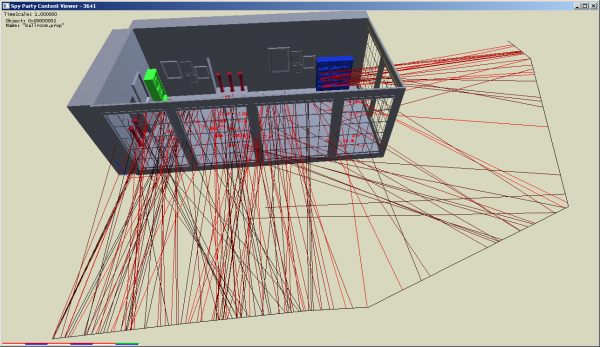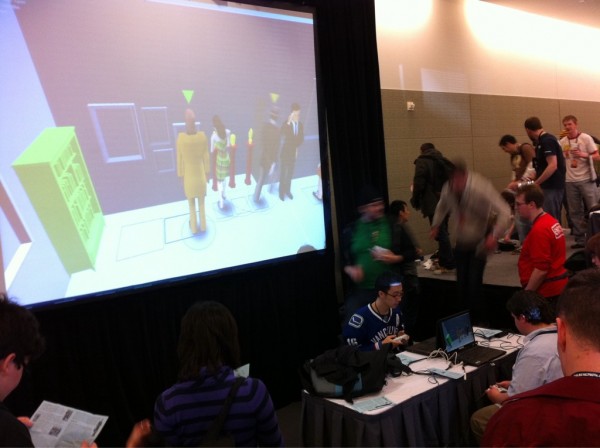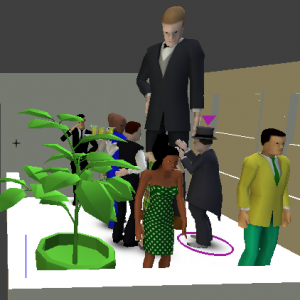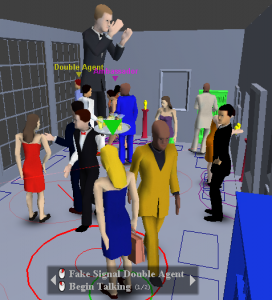I am deep deep deep in server stuff for the Early-Access Beta, so this post is mostly to take a short break from that, tell you folks I’m still alive, and post the collection of feedback I got today from the IGF submission last year.
I think it’s great the IGF gives submitters feedback, and, being on the Advisory Board for the Game Developers Conference, I know exactly how much work it is to even just grade the submissions, let alone writing up feedback clean enough that it can be sent back to submitters. It’s something we constantly wrestle with on the GDC AB: should we spend our time helping the accepted talks be better, or spend time giving feedback on why talks were rejected? It’s a tough decision with no easy answers.
So, I post this feedback here both because I think it’s great the IGF does this and it’s wonderful to get feedback from people who played the game “in the wild” without me standing there, and also because I think this specific SpyParty feedback is kinda funny in its breadth, yet also brings up interesting points worth discussing. Plus, I’m sick of trying to make sure my openssl certificates have the right permissions for the krb5kdc user to not violate SElinux policies and need a break…
I got three pieces of feedback, and they’re all about as different as can be. First up:
I have no objection to your focus on rules and skills. But I think a more abstract appearance for such abstract interactions would be more suitable. As it is now, you have created a murder simulator of the worst kind: one in which the player kills his or her friend.
This is especially problematic considering that you don’t even seem to care about the simulation aspect of the game, submitting a project as you did with only placeholder artwork. If you don’t mean to make a game about killing one’s friend, don’t use this metaphor.
I had no idea Jack Thompson was an IGF judge! They should really publicize that more. I kid! I actually have a post in draft form about how SpyParty uses violence in a different way than most games, but I haven’t had time to finish it up. I will tease one of the questions from that post here, since it’s topical to this feedback: I’m thinking about adding a “PG” mode to the game, where, instead of shooting the Spy, the Sniper player identifies the Spy and the guards come arrest him or her. Does this change the game? The sniper bullet is, at its most basic level, simply a way for the Sniper to pick a character. You can shoot a character in the toenail and it still counts. The game ends when that choice is made, so there is no actual violence in the interactivity of the game. But, some people argue having “arrest mode” would ruin the game. This gets to some of my opinions about how the phrase “game mechanics” is misused a lot of the time, and how the low level features are inseparable from the higher level aesthetics of the gameplay, about which I’ll write more later.
Next:
Awesome, probably the most innovative entry of the year. If it doesn’t win a prize it’s just because it feels very early in the development.
It seems to me that the main indicator of somebody being a spy is the walking flow. If you see somebody with a stuttering walk it’s over. It shouldn’t be just about that, I’d recommend some kind of automatic movement smoothing.
This topic of the “walking tell” is a really interesting one I’ve talked about a bit in interviews and comments on the blog, but never expanded on. I originally had click-to-move as the walking interface when the game was mouse-only, under the theory the game is supposed to be about behavior, not about not accidentally walking into walls. Makes perfect sense, right? But, when I went to add console controller support, I faced a dilemma: console click-to-move interfaces are always terrible, so should I make it direct-control or not? I thought about it a little deeper, and realized that when you’re playing a shooter or any other kind of player-skill direct-control action game, after an initial learning phase, you don’t actually think about the movement very much, you just express yourself through the control scheme. You don’t think, “now I must strafe right, which is the left analog stick”, you just do it; the controls have become transparent. I realized this actually adds a level of physicality and kinesthetics to the play experience that deepens it. Because you have to learn to move, the game is deeper, and more about performance. So, I put direct-control into the console controller interface for SpyParty, and the game got better. Yes, newbs get shot while they’re learning the controls, but the learning of the controls involves the Spy player observing the NPCs closely and learning how they walk, it involves being able to think fast on the fly and stay calm, it exposed the awesome “play it cool” mechanic, where the Spy needs to be okay with suboptimal positions and not fidget and correct, and it had a whole bunch of other interesting ramifications on the design, much like the Action Test mechanic. After observing this, I redid the mouse interface to be direct control too!
Finally:
Wonderful asymmetrical gameplay that is very nuanced. Needs polish, obviously, but in the games I played with another judge I had a really fun time.
Not much to say on this one, but I wasn’t sure what level of polish was appropriate for IGF, actually. In fact, I was slightly surprised SpyParty was nominated for Grand Prize this year, since, let’s face it, the game is nowhere near finished. I figured if it was going to get nominated, it would be for Game Design. But, any nomination is a huge honor, and if I’d been on the Grand Prize committee I’d have voted for Minecraft myself!
I haven’t decided whether to submit to IGF again. It seems weird to submit multiple times, especially if you’ve been nominated. Plus, I’m going to be insane with the Early-Access Beta, so I’ll see how I feel around submission time.
Okay, back to the server grindstone. My next task is to get the CoSign SSO authn system running in the private beta phpBB to talk to the LDAP directory to get the player’s email address populated correctly. Then, figure out how to create accounts in LDAP from httpd without using the default openssl LDAP crt I’ve registered in the environment because I’ve restricted its LDAP permissions tightly for security, then use this dn to create the Kerberos account, and hook it up to a web form I can use as the endpoint for PayPal confirmed purchases so invited players can actually log on. Whee, indie games are fun!
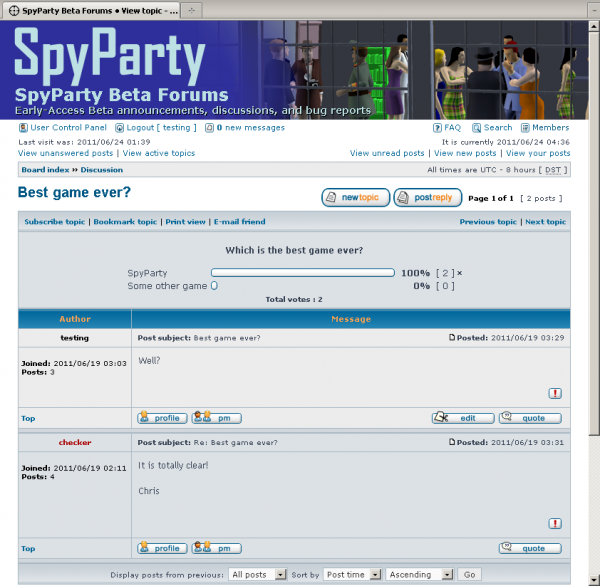
Teaser image!















